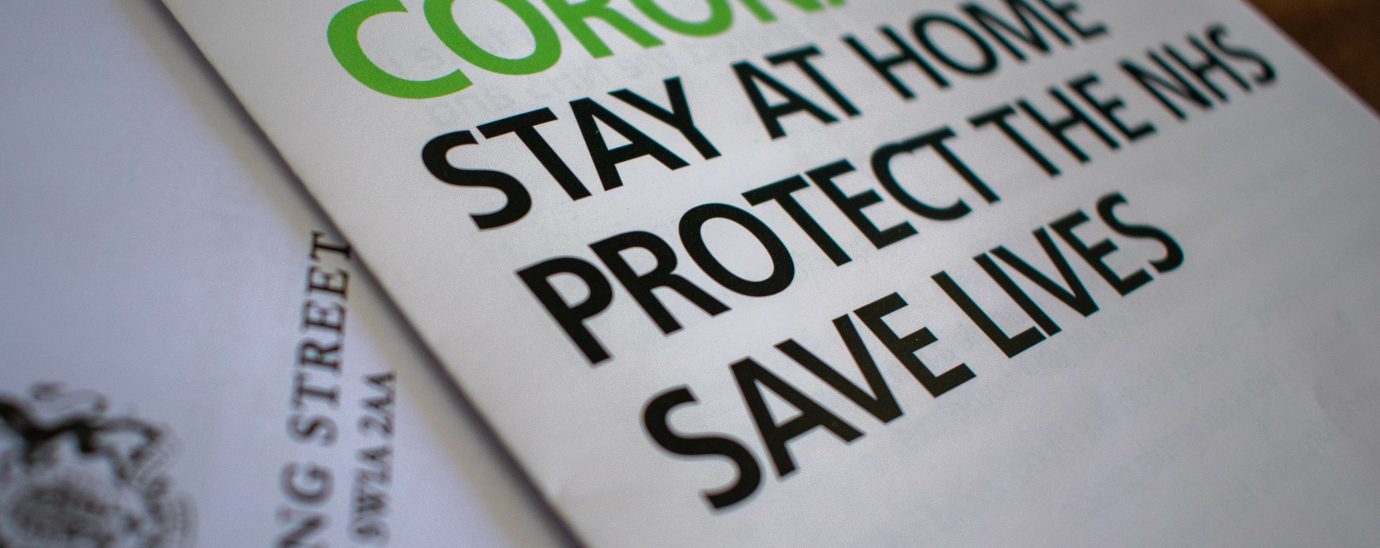Attempts to avoid full lockdown as Omicron spreads and Work From Home guidance is announced

We look into the emerging news of the Omicron variant, tightening restrictions in the UK, and the ways businesses can protect employees.
In the UK, restrictions have just been announced for workers to return to remote work where possible, following previous rumors of yet another lockdown. This is due to the discovery of a new variant, which has been given the name ‘Omicron,’ and is rapidly spreading worldwide.
Unlike the initial outbreak of Covid, the groundwork is in place now so nations can respond much faster to new variants. In this case, only two weeks from the initial testing of ‘patient zero’ formed the discovery of Omicron. The entire world is readying itself to examine Covid test samples to see if they contain the Omicron variant.
Patient zero was reported to have traveled from Gauteng in Southern Africa to Hong Kong and before beginning his stringent quarantine procedure. He was only two days into it when a standard Covid-19 test alerted researchers that he had a high virus load. Meanwhile, scientists in South Africa became aware of a new variant appearing more and more frequently in test samples, and by 22 November 2021, the alarm was raised. Not long after patient zero tested positive, another case was discovered to be the person staying in the room directly across the hall from patient zero in the quarantine hotel.

The only way in which this person could have become infected was in the moments when the two people’s doors were opened into the shared hallway between the rooms. This would have occurred when they were accepting food deliveries, and the virus would have only had a brief moment to spread. Analysis of this and the way Omicron has quickly become widespread in the Gauteng province suggests that Omicron is much more contagious than previous variants.
Early scientific studies indicate Omicron causes less severe symptoms than its predecessors, which offers mild reassurance to the public and employers about the safety of employees in the office. This is mainly based on how doctors in South Africa have declared the majority of their SARS-CoV-2 cases are mild compared with the start of earlier waves.
The number of hospital patients infected with Covid-19 has been on the rise though, and this includes “incidental” cases (those seeking treatment for other medical complaints that then test positive). This correlates with the data showing Omicron to be more transmissible. Many of these seem to have been caused by ‘super-spreading’ events such as the Norway Christmas party.
Omicron does seem more dangerous due to the high infection rate; however, data gathered through the start of December indicates the number of patients that needed oxygen support was significantly lower than in previous waves. This suggests fewer patients suffer severe lung damage from Covid-19, which has hospitalized many in earlier waves and caused high mortality rates. Some have argued that the new variant displaces the previous Covid variants, making it a positive thing for the economy as it is presently less fatal. Though the full dangers of Omicron and its effect on the body are still being researched.

Employers are still recommended to run regular Covid tests to ensure early detection, and even though there is evidence that Omicron is resistant to Covid-19 vaccinations and previous infections, there is still a need for the majority of the public to be vaccinated and up to date with boosters. This helps reduce the threat of severe symptoms and protect those with a higher risk of infection. Businesses should encourage employees to be vaccinated, especially if they will be present in an office or shared workspace rather than working remotely.
A key factor to understand about the Omicron variant is its ability to spread via airborne particles. From this information, we can create a plan of action to avoid infection or decrease the spread rate. Businesses should create a well-ventilated workspace, preferably with an air filtration system. This could then reduce the possibility of the virus circulating the building. Though there were rumors of UV lighting that could kill the virus, there is still minimal evidence to show that this is effective spread prevention. This method employed by some inside ventilation ducts can only affect virus particles it has direct contact with and is also harmful if used in direct skin contact.
The best route for an employer is to maintain the work from home scheme as long as possible in the coming months for those not needed to be in the workplace in person and create a staggered timetable in preparation for returning to work in the future. There is no better way to prevent spread presently than social distancing, masks, and remote working. Most employers now have the technology set up already for remote employees, including Zoom, Slack, and Microsoft Teams; it is advised to keep these ready for the foreseeable future.
Read More:
- The five key components to remote work
- Zoom’s new gender-inclusive feature
- The top 10 technology trends to watch out for in 2022
- Top tech tools for small businesses
If there comes a stage where we learn more about this new variant and the threat level increases, it would be wise to prepare for another lockdown in January, which is when it is predicted the peak will hit most countries. Be sure to have the systems in place to minimize the impact on business operations as much as possible. Presently we have one weeks notice to prepare for Plan B to begin.
Click here to discover more of our podcasts
For more news from Top Business Tech, don’t forget to subscribe to our daily bulletin!